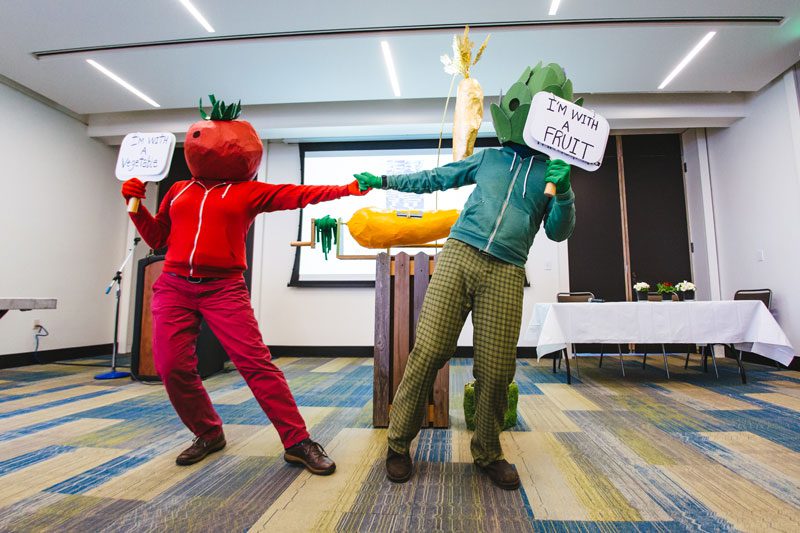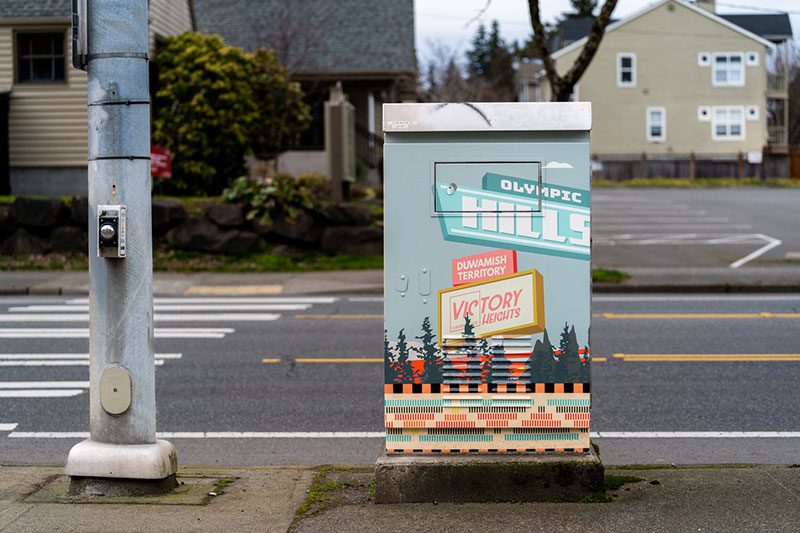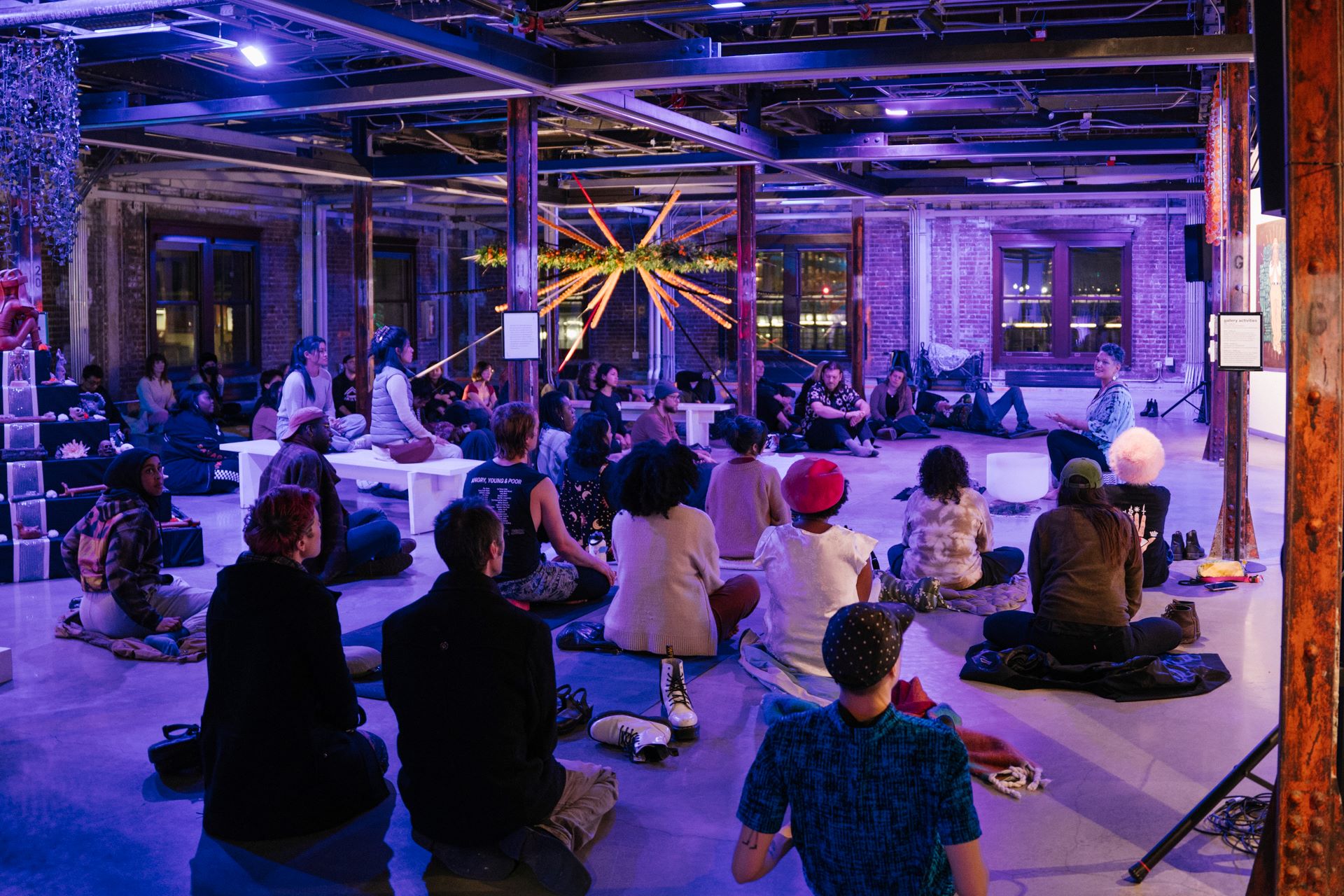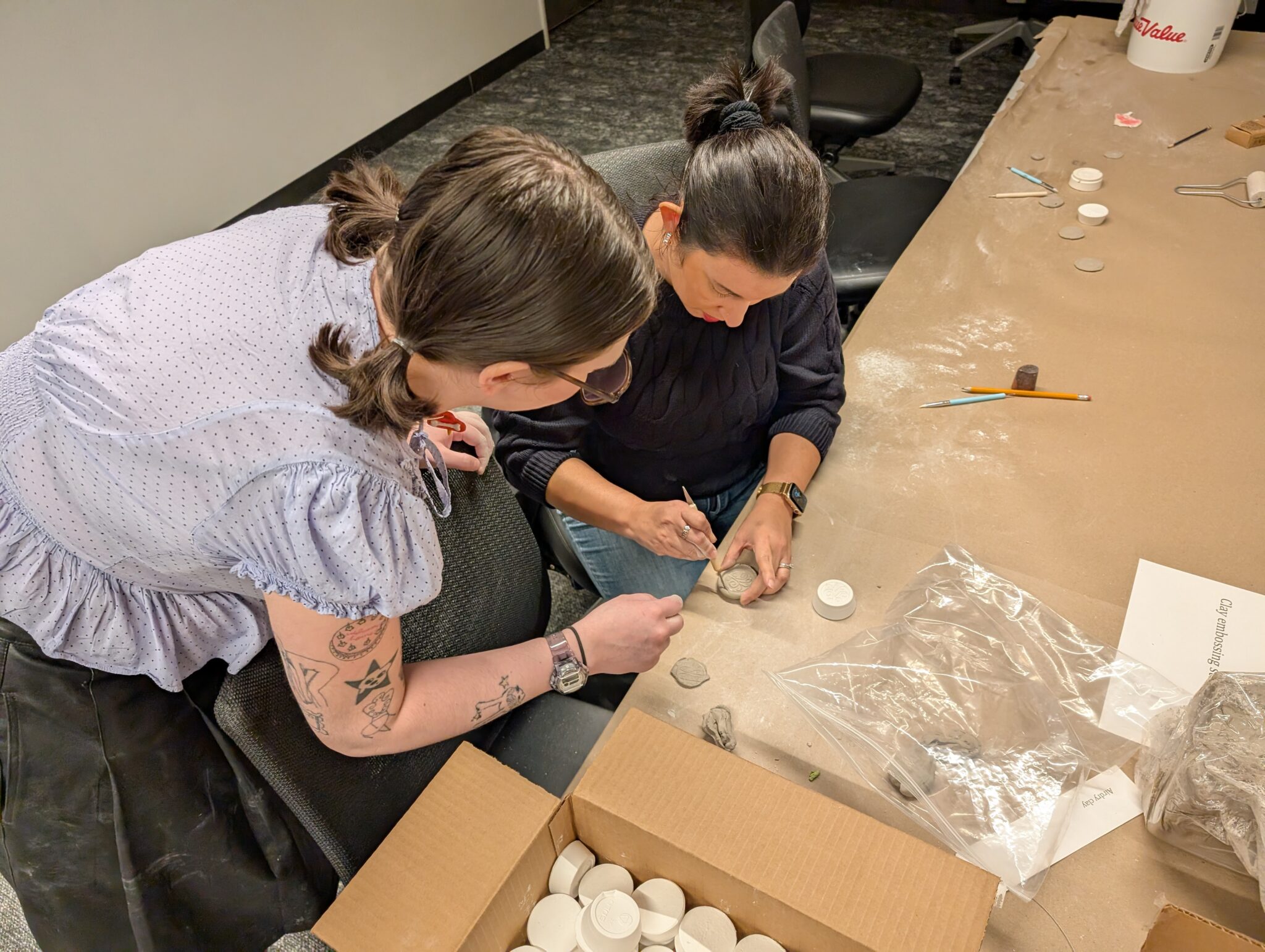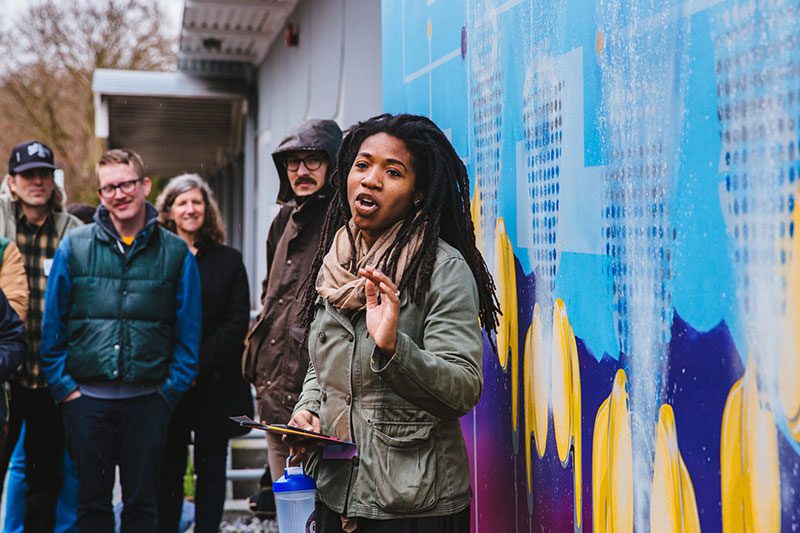 Aramis Hamer talks about her mural "For the Love of Music" to boot campers, photo by Sunny Martini
Aramis Hamer talks about her mural "For the Love of Music" to boot campers, photo by Sunny Martini In nearly every profession, there is a chicken and egg problem: experience helps applicants get a job, but without the first job, how does one acquire experience? Public art is no different in that regard. Public art, and the art world overall, are predominately White in terms of administration, policy, and art making, in part because artists of color often have fewer opportunities and resources to gain the necessary experience to secure commissions. Seattle’s Office of Arts and Culture (ARTS) commissions anywhere from 10 to 30 public art projects annually, creating temporary or permanent installations in parks, fire stations, libraries, playgrounds, the pedestrian right of way, and across the City.
Entrusting an artist with funds and permits to paint a mural or install a sculpture is no small matter. Artistry alone is not the only prerequisite for successful public art — artists must also propose designs that can weather the elements and withstand vandalism, negotiate installation requirements from other City departments, and fabricate a finished product on time and within a budget.
“Someone right out of grad school or trying to make a career transition isn’t going to be able to execute a $250,000 project,” explained Jason Huff, Public Art Program Manager at ARTS. “We needed to create the infrastructure that allows people to come into the field.”
The result is that ARTS now offers professional development for artists to obtain these skills under one roof through a series of workshops known as Public Art Boot Camp. A primary goal of the public art program is to address institutional racism by getting more artists of color into public art. To advance racial equity in Seattle’s public art program, staff recognized the need to provide training and opportunities to artists of color who otherwise aren’t able to access the same knowledge and resources.
This targeted training program recruits a cohort of around a dozen artists living in the Puget Sound region and Washington state through an application process, centering artists of color. To ensure that the program reaches new and emerging public artists, the applicant criteria indicates the ideal candidate has not yet previously received a public art commission above $5,000. This program is an important part of the ARTS’ strategy to advance racial equity in public art.
Over the course of 12 months, artists learn the ins and outs of public art, culminating in a temporary commission. Between its predecessor program, the Emerging Public Artists Roster started in 2003, and today’s boot camp, which launched in 2015, both with a racial equity focus, ARTS has trained over 100 artists over 20 years. Sticking with boot camp pays off: many program alumni have gone on to win contracts for temporary and permanent public art commissions.
Count Seattle-based Damon Brown among them. The 50-year-old artist walked away from his corporate graphic design job in October 2022 to pursue a full-time art career. He credits his enrollment two years prior in Public Art Boot Camp as a major impetus for taking that leap of faith. Through the program, he learned how to conduct community engagement, develop concept proposals, hire subcontractors, and safeguard post-installation rights and responsibilities. He also learned that public art is, in his words, “80% business, 20% art.”
But that less glamorous reality doesn’t deter him from the opportunity to make art that will endure for decades. Since his boot camp capstone project, the installation Here Before Us in Lake City, he has notched public art commissions for municipal, private, and nonprofit clients — including Seattle Parks and Recreation, Seattle Fire Department, Outdoor Research, InterIm Community Development Association, and Seattle Children’s Hospital.
“Boot camp was key,” he said. “I never would have known otherwise how to get into that lane.”
Read more stories on the Mayor’s Innovation and Performance Team blog about promising practices in Seattle’s work to make City contracting more efficient, results-driven, equitable, and strategic.
This is a blog post from the Mayor’s Innovation and Performance Team (I & P).
Seattle is the recipient of a $1 million Bloomberg Procurement Transformation Grant, a partnership between the Department of Finance and Administrative Services and I & P, with technical assistance from the Harvard Kennedy School Government Performance Lab.
The project aims to transform City procurement to be more efficient, results-driven, equitable, and strategic. As part of this, the City is highlighting a multi-part series of stories that demonstrate citywide promising practices that can better support our Women- and Minority-Owned Businesses (WMBEs).
